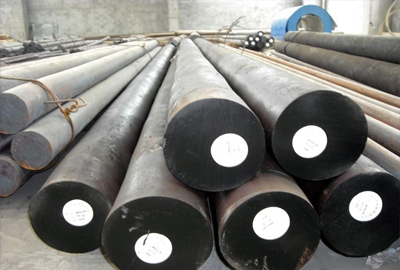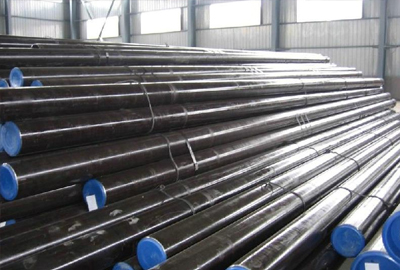Mat.No. 1.6582, DIN 34CrNiMo6, AISI 4337/4340
Short Description:
Designation by Standards Brand Name Ravne No. Mat. No. DIN EN AISI VCNMO150 748 1.6582 34CrNiMo6 34CrNiMo6 4337/4340 Chemical Composition (in weight %) C Si Mn Cr Mo Ni V W Others 0.34 max.0.40 0.65 1.50 0.23 1.50 - - - DescriptionVCNMO150 is a heat treatable, low alloy steel containing nickel, chromium and molybdenum. It is known for its toughness and capability of developing high strength in the heat treated condition while retaining good fatigue strength. A very popular, ve...
Product Detail
FAQ
Product Tags
Designation by Standards
| Brand Name | Ravne No. | Mat. No. | DIN | EN | AISI |
| VCNMO150 | 748 | 1.6582 | 34CrNiMo6 | 34CrNiMo6 | 4337/4340 |
Chemical Composition (in weight %)
| C | Si | Mn | Cr | Mo | Ni | V | W | Others |
| 0.34 | max.0.40 | 0.65 | 1.50 | 0.23 | 1.50 | - | - | - |
Description
VCNMO150 is a heat treatable, low alloy steel containing nickel, chromium and molybdenum. It is known for its toughness and capability of developing high strength in the heat treated condition while retaining good fatigue strength. A very popular, versatile steel. It can be heat-treated to produce a wide range of tensile strength in moderate sections.
Applications
Typical applications are for structural use, such as aircraft landing gear, power transmission gears and shafts and other structural parts, general engineering parts, hrough-hardened gears, connecting rods and bolts, gun barrels.
Physical properties (avarage values) at ambient temperature
Modulus of elasticity [103 x N/mm2]: 210
Density [g/cm3]: 7.84
Thermal conductivity [W/m.K]: 37.7
Specific heat capacity[J/g.K]: 0.46
Environmental resistance
Flammability: very good
Fresh water: good
Organic solvent: very good
Oxidation at 500oC: good
Sea water: average
Strong acid: poor
Strong alkalis: poor
Wear: very good
Weak acid: average
Weak alkalis: good
Minimum service temperature: -73.2 to -42.2oC
Maximum service temperature: 613-653oC
Continuous Cooling Transformation (CCT) Diagram

Click the image to enlarge the diagram.
Time-Temperature Transformation (TTT) Diagram

Click the image to enlarge the diagram.
Normalizing
Normalizing temperature: 850-880oC.
Stress Relieving
Stress relieving to remove machining stresses should be carried out by heating to approx. 650oC, holding for 1-2 hours at heat, followed by air cooling. This operation is performed to reduce distortion during heat treatment.
Hardening
Harden from a temperature of 830-860oC followed by oil quenching. Qenching temperature in the end-quench test is 850oC.
Tempering
Tempering temperature: 540-660oC.
Mechanical Properties in Quenched and Tempered Condition
| Diameter (mm) | 0.2 % proof stress (N/mm2) | Tensile strength (N/mm2) | Elongation (%) | Reduction of area (%) | Notch impact energy (ISO-V) (J) |
| up to 16 | 980 | 1180-1380 | 9 | 40 | 41 |
| 17-40 | 885 | 1080-1280 | 10 | 45 | 48 |
| 41-100 | 785 | 980-1180 | 11 | 50 | 48 |
| 101-160 | 685 | 880-1080 | 12 | 55 | 48 |
| 161-250 | 590 | 780-930 | 13 | 55 | 48 |
Distance From Quenched End in mm
| - | 1.5 | 3 | 5 | 7 | 9 | 11 | 13 | 15 | 20 | 25 | 30 | 35 | 40 | 45 | 50 |
| H max. | 58 | 58 | 58 | 58 | 57 | 57 | 57 | 57 | 57 | 57 | 57 | 57 | 57 | 57 | 57 |
| H min. | 50 | 50 | 50 | 50 | 49 | 48 | 48 | 48 | 48 | 47 | 47 | 47 | 46 | 45 | 44 |
| HH max. | 58 | 58 | 58 | 58 | 57 | 57 | 57 | 57 | 57 | 57 | 57 | 57 | 57 | 57 | 57 |
| HH min. | 53 | 53 | 53 | 53 | 52 | 51 | 51 | 51 | 51 | 50 | 50 | 50 | 50 | 49 | 48 |
| HL max. | 55 | 55 | 55 | 55 | 54 | 54 | 54 | 54 | 54 | 54 | 54 | 54 | 53 | 53 | 53 |
| HL min. | 55 | 55 | 55 | 55 | 54 | 54 | 54 | 54 | 54 | 54 | 54 | 54 | 54 | 53 | 53 |
Tempering Diagram

Click the image to enlarge the diagram.
Hardenability Diagram

Click the image to enlarge the diagram.
Forging
Hot forming temperature: 1100-900oC.
Machinability
Machining is best done with this alloy in the annealed or normalized and tempered condition. It can be machined by all conventional methods.
Corrosion Resistance
This is a low alloy steel and not a corrosion resistant alloy. Protective coating should be used.
Welding
The alloy can be fusion or resistance welded. Preheat and post heat weld procedures should be followed when welding this alloy by established methods.
Cold working
The VCNMO150 alloy may be cold worked, in the annealed condition, by conventional methods and tooling. It has good ductility.
Forms manufactured: Please see the Dimensional Sales Program.
Disclaimer
The information and data presented herein are typical or average values and are not a guarantee of maximum or minimum values. Applications specifically suggested for material described herein are made solely for the purpose of illustration to enable the reader to make his own evaluation and are not intended as warranties, either express or implied, of fitness for these or other puposes. There is no representation that the recipient of this literature will receive updated editions as the become available.
FAQ Content
![[0{7)7UAZ(]4W{5TSMC65Q7](https://www.htsteelmill.com/uploads/077UAZ4W5TSMC65Q7.png)






